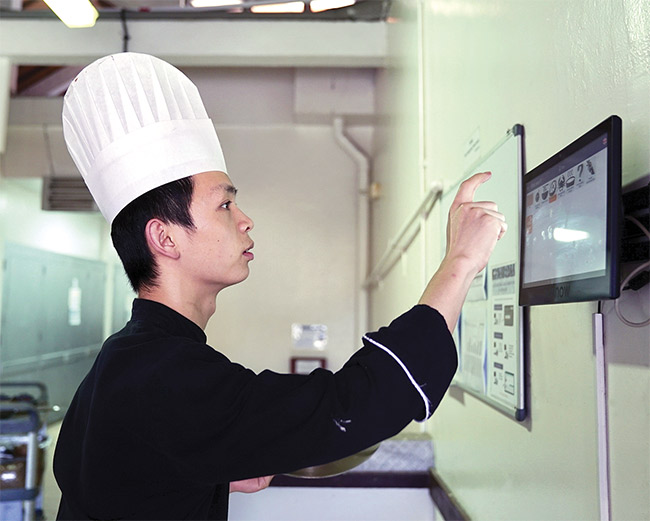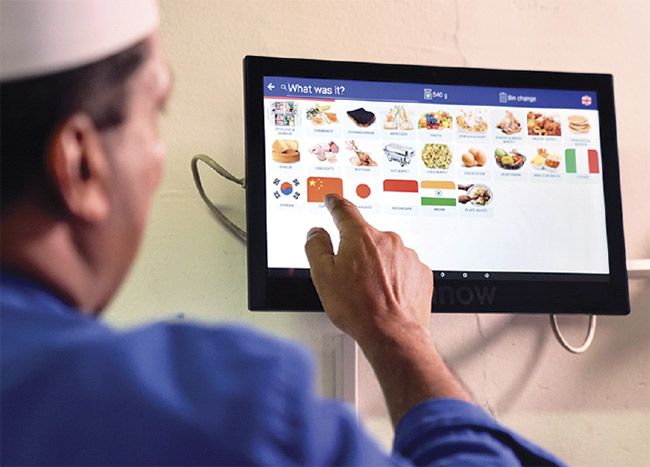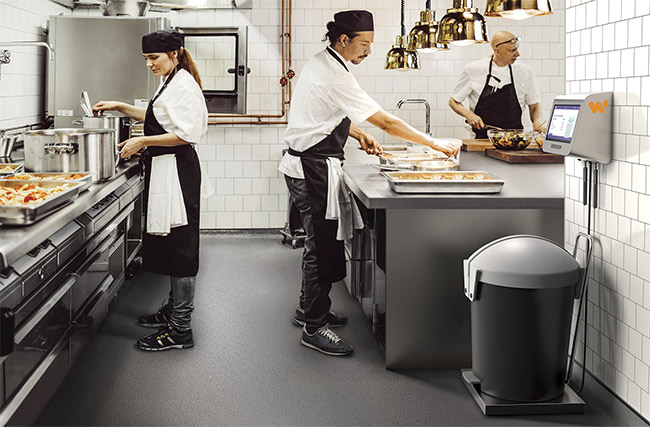HANK HOGAN, CONTRIBUTING EDITOR
One third of all food grown disappears somewhere between farm and table, according to the U.S. Department of Agriculture, resulting in
the loss of $1 trillion per year and
accounting for about 8% of global greenhouse gas emissions. The worldwide hospitality sector wastes an estimated $100 billion worth of food annually, with much of this loss arising from a lack of data.
“Often, culinary teams are making complex forecasting decisions with imperfect information in stressful situations, which is why our data shows 5% to 15% of food purchased ends up being wasted,” said Marc Zornes, founder and CEO of Winnow Solutions. The London-based company, which has a U.S. subsidiary in Iowa City, Iowa, has paired an imaging system with
AI-based analysis software to better track food waste in commercial kitchens.
Food waste is not a new problem in the hospitality industry, but traditional methods of gathering information about waste fall short. Using pen and paper or manual spreadsheets is time-consuming and prone to human error. Such methods require that a person identify and weigh the waste, and then record the information. The data then has to be compiled into a report. Only after all of these steps have been taken can the chef in charge of a kitchen, or others involved in food purchase or preparation, take action to cut waste.


Kitchen staff use a touchscreen to make selections in the Winnow Vision food waste reduction system. Courtesy of Winnow.
Years ago, Winnow started working on addressing the problem. His work culminated in a system that won an award at a food sustainability event held in conjunction with the 2019 World Economic Forum in Davos, Switzerland.
Winnow’s solution uses vision and other sensors, as well as sophisticated analysis tools.
Zornes said his company’s AI product, Winnow Vision, uses machine vision to “learn to see” the food being thrown away. “Our smart scales automatically capture weight, and our hardware is connected to the cloud, making it easy for teams to record food that’s wasted.”
The hardware part of the solution is a smart bin comprised of a smart color camera and an illuminating light source mounted a short distance above a large container. As waste is thrown away, a sensor capable of detecting a change as little as 20 g weighs the discarded food. The camera captures an image of the waste.
The image is then analyzed by neural network-based AI software. The software initially undergoes training by staff to tune the process of identifying food waste. Identification is accomplished by comparing observed features to those in a training data set. After the training
period, the system automatically recognizes food waste items and needs almost no additional training or data entry by staff, according to company documents.

The Winnow Vision system, mounted on a wall above a bin (right) in a restaurant kitchen, classifies food waste and helps to reduce it by as much as 50%. Courtesy of Winnow.
Knowing what type of waste and how much is thrown away enables the software to generate an instant assessment of the monetary value of the food that is discarded. The data also flows into a report that tallies losses according to type of food, length of time, and other measures. Armed with this information, chefs and other staff can discover causes of waste and adjust operations to reduce it.
IKEA UK & Ireland installed the
Winnow product at its stores, many
of which serve prepared food to tens
of thousands of customers weekly.
The use of vision-based smart bins
resulted in a 50% reduction in food waste in the stores, according to a video clip featuring Hege Sæbjørnsen, country sustainability manager at IKEA UK & Ireland. Staff at IKEA UK said the system does a good job of identifying waste.
According to Zornes, the vision-
enabled product typically cuts food costs by between 2% and 8%. Future plans include reducing the training time of the model to a matter of weeks,
and other advancements.
“Eventually, our aspiration is that no human involvement will be required [for training], thereby fully automating the process,” Zornes said. “In that scenario, every kitchen in the world could benefit from our analytics, leading to the eradication of avoidable food waste.”